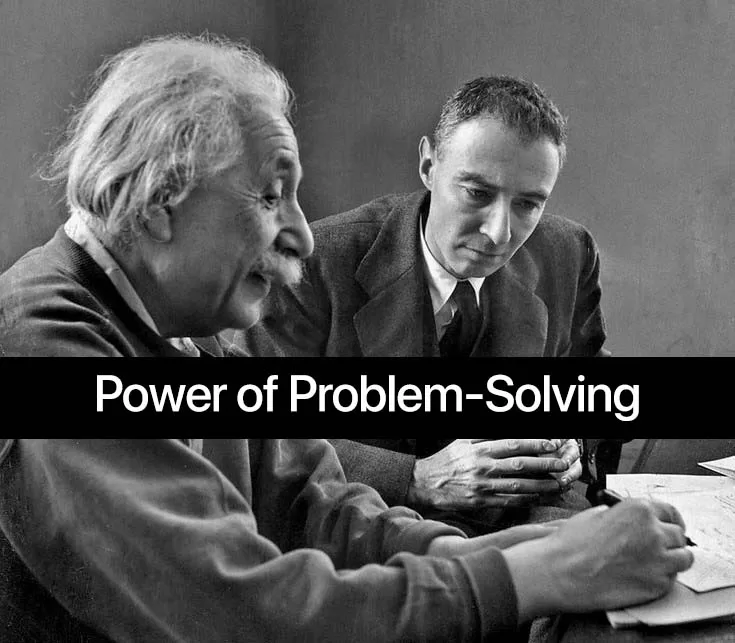In a rapidly evolving world, marked by the complexities of life and technological advancements, problem-solving has emerged as an essential skill for success.
Table of Contents
Definition of Problem-Solving
Problem-solving is not just a skill; it’s a dynamic process that involves analyzing challenges, generating effective solutions, and making decisions to overcome obstacles. In today’s fast-paced world, the ability to solve problems efficiently is more crucial than ever.
Significance in Today’s World
In a society driven by constant change and complexity, individuals, businesses, and communities face diverse challenges. The power of problem-solving lies in its capacity to adapt and thrive in this dynamic environment.
Overview of the Article
This article delves into the evolution of problem-solving, its cognitive aspects, and its application in various sectors. From workplace scenarios to educational settings, we explore the psychology behind effective problem-solving and address challenges and trends shaping the future.
I. The Evolution of Problem-Solving
Historical Perspective
Throughout history, humanity has tackled problems ranging from survival to innovation. Examining how our ancestors approached challenges provides insights into the roots of effective problem-solving.
Technological Advancements
The advent of technology has revolutionized the problem-solving landscape. From calculators to AI algorithms, our tools have evolved, but the core principles of problem-solving remain constant.
Impact on Society
Effective problem-solving has far-reaching effects on society, driving progress, economic growth, and social development. Understanding this impact is essential in appreciating its role in our lives.
II. The Cognitive Process Behind Problem-Solving
Analyzing the Problem
The initial step in problem-solving involves dissecting the issue at hand. Understanding the root cause is crucial for developing targeted solutions.
Generating Solutions
Creativity plays a pivotal role in generating diverse solutions. We explore techniques and approaches that enhance this aspect of the problem-solving process.
Decision-Making
The final stage is making decisions based on the analyzed data and generated solutions. Effective decision-making is a skill honed through experience and strategic thinking.
III. Problem-Solving Skills in the Workplace
Importance for Professionals
In a competitive job market, problem-solving skills distinguish exceptional professionals. Employers seek individuals who can navigate challenges and contribute to innovative solutions.
Examples of Effective Problem-Solving in Businesses
Case studies highlight how successful companies leverage problem-solving to overcome obstacles, enhance efficiency, and gain a competitive edge.
Enhancing Skills for Career Growth
Continuous skill development is essential. We explore practical steps individuals can take to enhance their problem-solving abilities and advance their careers.

IV. Problem-Solving in Education
Integration into Curriculum
Educational institutions recognize the importance of cultivating problem-solving skills. We explore how problem-solving is integrated into various academic disciplines.
Developing Critical Thinking
Problem-solving fosters critical thinking skills, vital for academic success and lifelong learning. Strategies for nurturing critical thinking abilities are discussed.
Real-world Applications in Learning
The article emphasizes the application of problem-solving skills beyond textbooks, preparing students for real-world challenges.
V. The Psychology of Problem-Solving
Understanding Human Behavior
Psychological factors influence problem-solving. We delve into how emotions, biases, and cognitive processes impact our ability to find effective solutions.
Emotional Intelligence
Emotional intelligence enhances problem-solving by fostering empathy, communication, and collaboration. We explore its role in addressing challenges.
Coping Strategies
Challenges often induce stress. Understanding coping strategies equips individuals to manage stress and maintain focus during problem-solving.
VI. Challenges in Problem-Solving
Common Obstacles
Identifying and overcoming common obstacles, such as fear of failure or lack of information, is essential for unlocking problem-solving potential.
Overcoming Mental Blocks
Strategies to overcome mental blocks and promote creative thinking are discussed, ensuring individuals can navigate challenges effectively.
The Role of Creativity
Creativity is a cornerstone of effective problem-solving. Balancing analytical thinking with creative approaches leads to innovative solutions.
VII. Technology and Problem-Solving
AI and Automation
The integration of AI in problem-solving processes raises questions about human-machine collaboration and the ethical implications of automation.
Human-Machine Collaboration
Exploring how humans and machines can collaborate in problem-solving, harnessing the strengths of both for optimal outcomes.
Ethical Considerations
As technology advances, addressing ethical concerns in problem-solving becomes crucial. We discuss the importance of responsible and ethical decision-making.
VIII. Everyday Problem-Solving
Personal Development
Problem-solving is not confined to professional settings. It plays a significant role in personal development, fostering resilience and adaptability.
Navigating Life Challenges
Applying problem-solving skills to everyday challenges enhances one’s ability to navigate life’s complexities with confidence.
Building Resilience
Developing resilience through problem-solving empowers individuals to face setbacks with a positive mindset, promoting personal growth.
IX. Case Studies
Success Stories
Examining success stories where individuals or communities overcame significant challenges through effective problem-solving.
Lessons Learned
Extracting valuable lessons from past problem-solving experiences to guide future endeavors.
Inspirational Examples
Showcasing individuals who turned adversity into opportunities through innovative problem-solving approaches.
X. Cultivating Problem-Solving Mindset
Encouraging Curiosity
Cultivating a problem-solving mindset begins with fostering curiosity and a proactive approach to challenges.
Continuous Learning
Emphasizing the importance of continuous learning in refining problem-solving skills and staying adaptable in a dynamic world.
Adapting to Change
Adapting to change is a fundamental aspect of effective problem-solving. Strategies for embracing change and leveraging it for positive outcomes are explored.
XI. Future Trends in Problem-Solving
Emerging Technologies
Exploring how emerging technologies, such as quantum computing and augmented reality, may influence the future of problem-solving.
Global Collaborations
Problem-solving is increasingly becoming a collaborative effort on a global scale. Understanding the dynamics of global collaborations is essential.
Potential Impact on Society
Anticipating how advancements in problem-solving may shape the future, both in terms of societal development and individual well-being.
XII. Conclusion
Recap of Key Points
Summarizing the key aspects of problem-solving explored in the article, emphasizing its pervasive importance.
Encouragement for Problem-Solving
Encouraging readers to embrace problem-solving as a lifelong skill, empowering them to face challenges with confidence and creativity.
Call to Action
Inspiring readers to actively cultivate and apply problem-solving skills in their personal and professional lives.
FAQs
A. How can I improve my problem-solving skills?
Improving your problem-solving skills involves a combination of practice, learning, and self-awareness. Here are some practical steps you can take:
- Practice Regularly: Engage in puzzles, brain teasers, and real-life scenarios to exercise your problem-solving muscles.
- Analytical Thinking: Break down problems into smaller components, making it easier to identify and address individual challenges.
- Learn from Mistakes: Embrace failures as opportunities for learning. Analyze your mistakes, understand the root causes, and apply these lessons to future problem-solving endeavors.
- Diverse Perspectives: Seek input from others with different viewpoints. Collaboration often sparks creative solutions and enhances your problem-solving repertoire.
- Continuous Learning: Stay informed about various fields. A broad knowledge base equips you with diverse approaches to problem-solving.
B. Is problem-solving the same across different industries?
While the fundamental principles of problem-solving remain consistent, the application can vary across industries. Different sectors may prioritize specific skills or methodologies, and the nature of the problems encountered can differ. For instance:
- Technical Industries: Problem-solving often involves troubleshooting technical issues, optimizing processes, and innovating technology.
- Healthcare: Focuses on diagnosing complex medical conditions, optimizing patient care, and improving healthcare systems.
- Business and Finance: Involves strategic decision-making, risk analysis, and finding solutions to financial challenges.
Adapting problem-solving approaches to industry-specific contexts is crucial for success.
C. Can technology hinder problem-solving abilities?
While technology can be a powerful tool for problem-solving, overreliance or misuse may pose challenges. Here are potential ways technology could hinder:
- Dependency: Relying solely on technology may lead to a lack of critical thinking and creativity in finding alternative solutions.
- Information Overload: Access to vast amounts of information might overwhelm, making it challenging to discern relevant details for effective problem-solving.
- Automation Bias: Depending on automated systems might limit one’s ability to critically evaluate and solve problems independently.
Balancing the use of technology with essential human skills is key to avoiding hindrances in problem-solving.
D. Are there any specific courses for enhancing problem-solving skills?
Yes, numerous courses cater to enhancing problem-solving skills. Consider options like:
- Critical Thinking and Problem Solving: These courses often cover foundational principles, strategies, and practical applications.
- Design Thinking: Focused on fostering creative problem-solving through empathetic understanding and iterative processes.
- Project Management: Helps in developing organizational and analytical skills to tackle complex issues.
- Decision-Making Courses: Specific programs address effective decision-making techniques.
Look for reputable online platforms, universities, or professional development organizations offering these courses.
E. What role does critical thinking play in effective problem-solving?
Critical thinking is a cornerstone of effective problem-solving. It involves:
- Analysis: Carefully examining the problem, breaking it down into components, and understanding its nuances.
- Evaluation: Assessing the validity and relevance of information to make informed decisions.
- Creativity: Thinking outside conventional boundaries to generate innovative solutions.
- Problem Identification: Recognizing underlying issues and formulating precise problem statements.
- Decision-Making: Applying sound judgment based on critical evaluation of available options.
In essence, critical thinking provides the framework for approaching problems systematically and arriving at well-founded solutions.


0 Comments